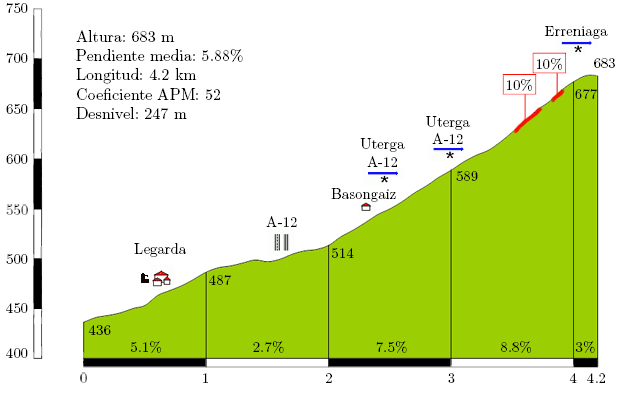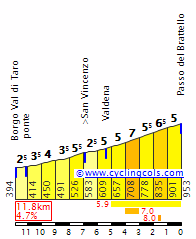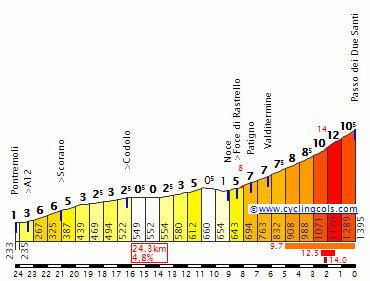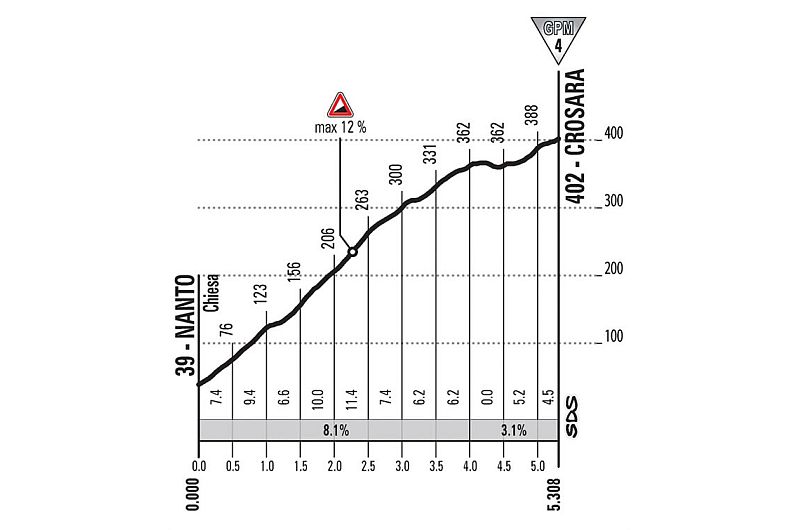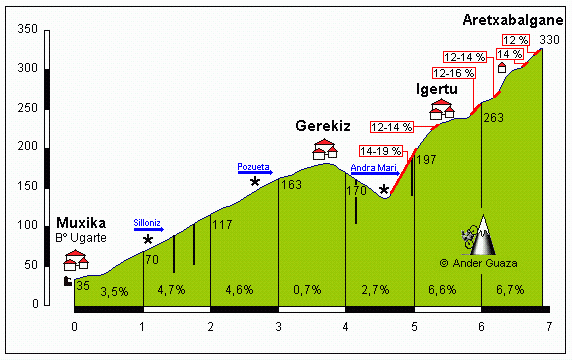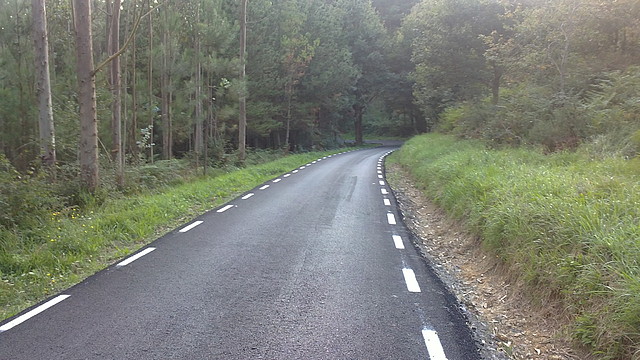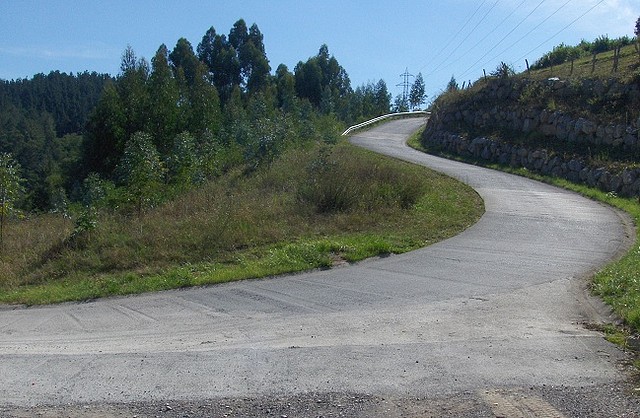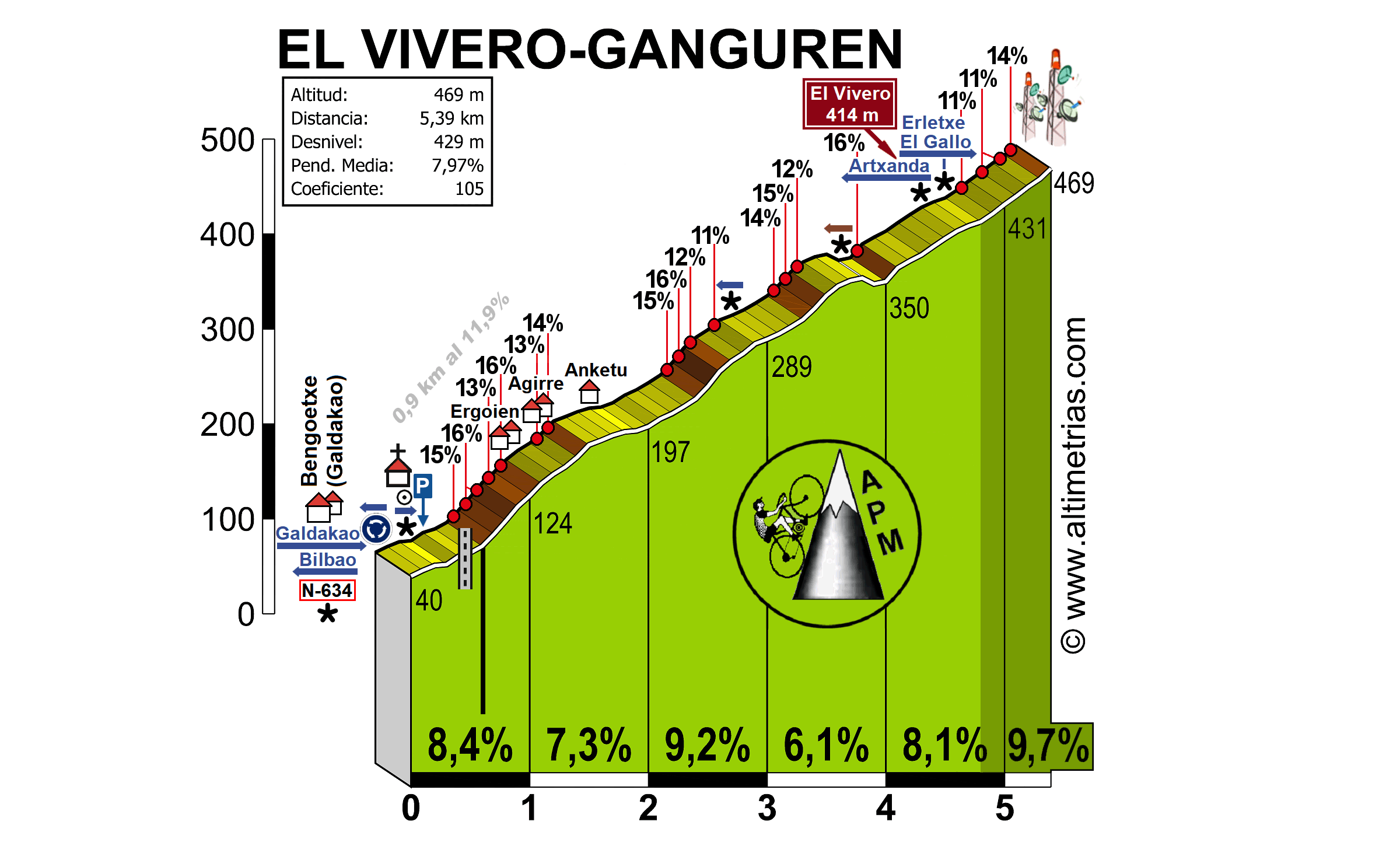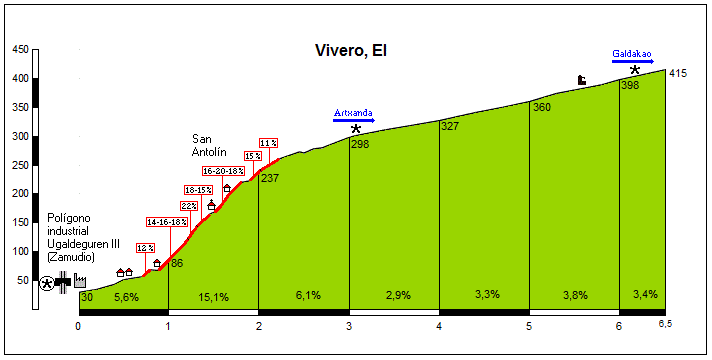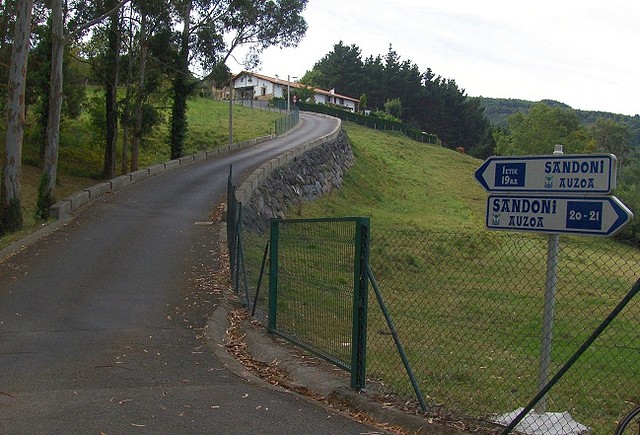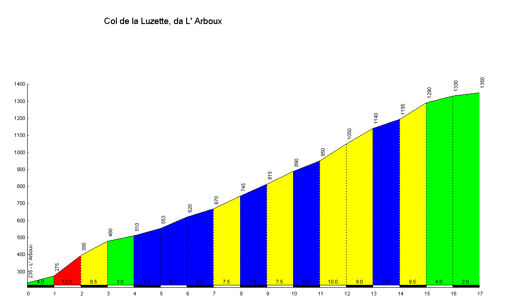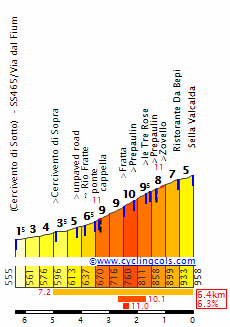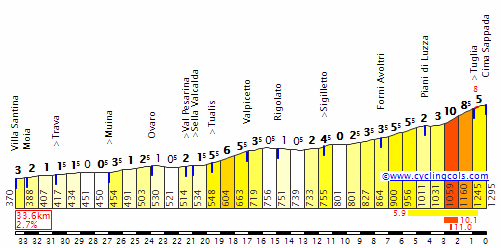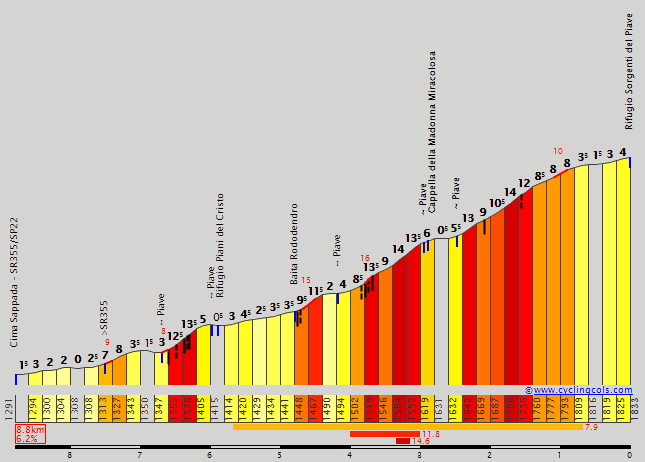- Feb 20, 2010
- 33,095
- 15,343
- 28,180
Lusette-Aigoual, since Puy de Dôme is inaccessible it's arguably the only HC in the Massif Central, depending on your geographical limits re Ventoux.
Stage 9: Solsona - Monestir de les Avellanes, 189km


GPM:
Alt de Serra-Seca (cat.2) 10,6km @ 5,8%
Coll de Boixóls (cat.1) 14,4km @ 5,1%
Alt de Montllobar (cat.2) 15,0km @ 4,0%
Coll d'Ares (cat.ESP) 16,9km @ 6,4%
Port d'Áger (cat.3) 4,1km @ 6,6%
Following on directly from yesterday's brutal stage it's another of that type of stage the Vuelta never seems to do - and when it does, it gets great racing like stage 20 this year - where the stage doesn't finish in a climb and the key climb isn't the last one. After yesterday however, today is all about a different type of climbing. Whereas yesterday was all brutal hell-slopes, this is a more sedate, rhythmical climbing that will hopefully suit an entirely different type of climber.

Today's stage is effectively the race of Monasteries; we start in the medieval centre of Solsona with its impressive cathedral and monastery complex, and end at a somewhat more isolated Monastery, the Monestir de les Avellanes. The transfer from yesterday's finish, for once, is short, so the riders should be well rested, which is good as there's once more quite a lot of climbing to do today.
Unlike yesterday, when the riders were eased into the stage before all hell broke loose in the second half, today there should be battles right from the gun, because there's an early ramp and then we're straight into the Alt de Serra-Seca, a cat.2 climb which might have been cat.1 if placed in a more integral point. It was a cat.1 when it was used in the 2009 Tour de France in the otherwise anæmic Arcalis stage. It's realistically a bit shorter and steeper than its stats show owing to its last couple of kilometres being essentially flat passing the Mirador de Serra-Seca which offers some stunning views. We then have the Coll de Boix, which was named Port del Compte after the nearby ski station (and shouldn't have been, Port del Compte is an entirely different summit) in the 2009 Tour (one of the smaller things it got wrong, admittedly, since that shingle-inducing Tour is one of the worst-designed races in history). It's about 3km at between 5 and 6%, I elected to go the "no puntable" route; there are more than enough points-paying climbs in this Vuelta.

The wide and sedate descent takes us into the scenic river crossing town of Coll de Nargó, before the road turns uphill again, this time for a longer but more gradual climb, to another classic of the Catalan Pyrenean foothills, the Coll de Boixóls. Given that the Volta a Catalunya now takes place in March, sometimes some of the highest passes can be an issue so we are more frequently seeing the stages through the foothills, which means more attention on climbs like this one. Like a lot of Catalan climbs it is long rather than complex, with mostly consistent gradients broken up by a brief plateau. This often means cumulative climbing is the way to enforce selectivity as steep ramps on connecting climbs aren't always available, which is the approach I've gone for here given that until the business end of the stage the hardest ramps are on Serra-Seca.

The little descent off of the Coll de Boixóls is pretty stunning as seen above, but like Serra-Seca there is a post-summit sting in the tail as well, as much as Boix and Serra-Seca are a double summit on the same road (as opposed to, say, Fumanyà-Pradell, which is a double-summit deliberately sought), Boixóls has a twin in the form of the Coll de Faidella, which from this side is a no puntable 2km at 5,4%, before a long descent which is very technical for the first 2/3 distance, the profile of which is here. This leads quite satisfyingly for the riders into a period of respite where the break can consolidate - I would anticipate at least 15 riders up the road, possibly more than 20-25 - and the Jersey rojo team can race manage. After passing through Tremp, the road goes uphill again, but once more the climbing is pretty gradual, being the two-stepped Alt de Montllobar which despite its length is only awarded second category status owing to the low average gradient; the first part is little more than false flat, while the final stretch is 8,5km at around 5,5% so not really cat.1-worthy (especially if Serra-Seca isn't!!!). The descent from this takes us down to Puente de Montañana, after which all hell is prepared to break loose as we take on the toughest climb of the day.

A thundering climb in western Catalunya, this Coll d'Ares is not to be confused with the more gradual and famous namesake on the French border in Pyrenees-Orientales. This Coll d'Ares has an average of 6,4% over 16 kilometres, so not perhaps the most dramatic ESP category you will ever find, but it does feature more than 20 ramps of over 10%, so consistency is an issue considering the way the rest of the climbing has been today. There are some spectacular hairpins and that for the most part the steepest parts are at the bottom should ensure this one creates some interesting scenarios in the race after yesterday's hell-slopes.
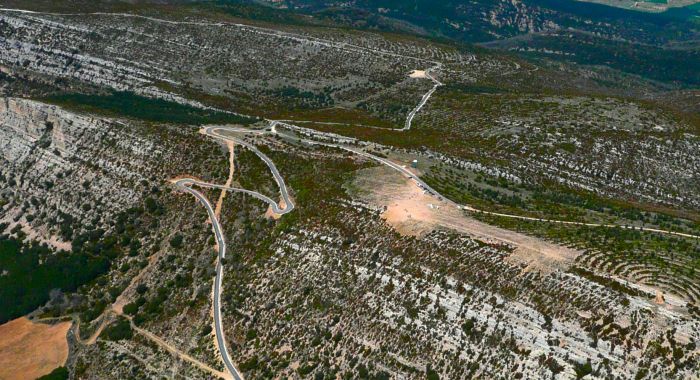
A similarly tricky descent into Áger follows, after the crest of the Coll d'Ares 33km from the line. The rest day is not tomorrow, although tomorrow's stage (the last before the rest day) is significantly easier in order to incentivize attacks today. For that reason as well, the intermediate sprint in Áger includes bonus seconds of course, 19km from the line, before throwing us into the final slopes of the day, a short sharp cat.3 burst up to the Port d'Áger. The full climb featured mid-stage in a 2013 Volta a Catalunya stage however we are only doing the last few kilometres having joined after the Coll d'Ares descent, giving us this final profile. As you can see it's pretty consistent climbing at mid 6s in the gradient, but cresting at 14km to go with only a short descent and false downhill flat to come should tempt some movers - again, there are very few mountaintop finishes in this race and none of cat.1 or ESP left for riders to save themselves for. The riders then leave the main road after the village of Les Avellanes to take a trunk road that leads to the Monastery, mainly for safety purposes as I didn't want to put the finish on the main road nor put a sharp left hander with only 100m to go. It only extends the run-in by about a kilometre, though, so I don't think it will too negatively affect the racing on Ares or Port d'Áger.
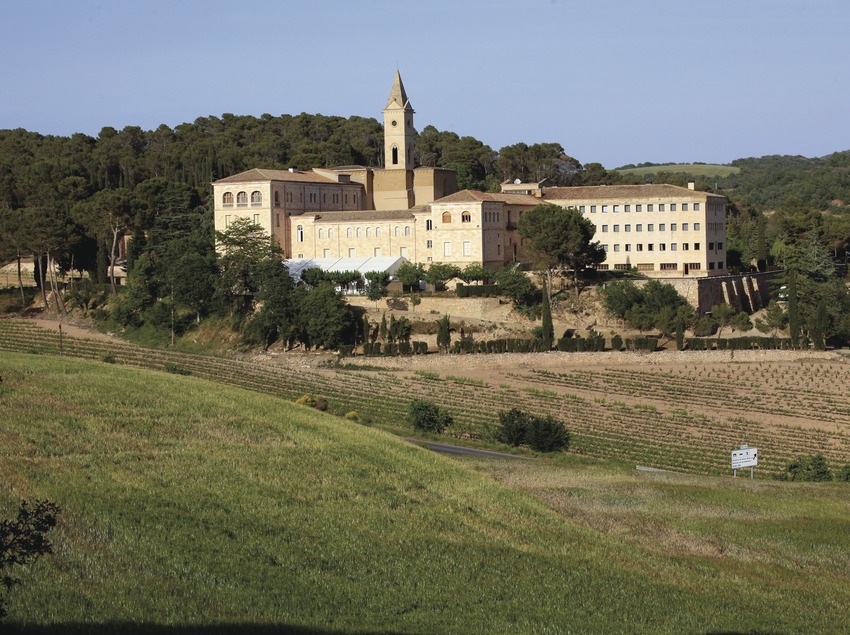
Stage 9: Solsona - Monestir de les Avellanes, 189km


GPM:
Alt de Serra-Seca (cat.2) 10,6km @ 5,8%
Coll de Boixóls (cat.1) 14,4km @ 5,1%
Alt de Montllobar (cat.2) 15,0km @ 4,0%
Coll d'Ares (cat.ESP) 16,9km @ 6,4%
Port d'Áger (cat.3) 4,1km @ 6,6%
Following on directly from yesterday's brutal stage it's another of that type of stage the Vuelta never seems to do - and when it does, it gets great racing like stage 20 this year - where the stage doesn't finish in a climb and the key climb isn't the last one. After yesterday however, today is all about a different type of climbing. Whereas yesterday was all brutal hell-slopes, this is a more sedate, rhythmical climbing that will hopefully suit an entirely different type of climber.

Today's stage is effectively the race of Monasteries; we start in the medieval centre of Solsona with its impressive cathedral and monastery complex, and end at a somewhat more isolated Monastery, the Monestir de les Avellanes. The transfer from yesterday's finish, for once, is short, so the riders should be well rested, which is good as there's once more quite a lot of climbing to do today.
Unlike yesterday, when the riders were eased into the stage before all hell broke loose in the second half, today there should be battles right from the gun, because there's an early ramp and then we're straight into the Alt de Serra-Seca, a cat.2 climb which might have been cat.1 if placed in a more integral point. It was a cat.1 when it was used in the 2009 Tour de France in the otherwise anæmic Arcalis stage. It's realistically a bit shorter and steeper than its stats show owing to its last couple of kilometres being essentially flat passing the Mirador de Serra-Seca which offers some stunning views. We then have the Coll de Boix, which was named Port del Compte after the nearby ski station (and shouldn't have been, Port del Compte is an entirely different summit) in the 2009 Tour (one of the smaller things it got wrong, admittedly, since that shingle-inducing Tour is one of the worst-designed races in history). It's about 3km at between 5 and 6%, I elected to go the "no puntable" route; there are more than enough points-paying climbs in this Vuelta.

The wide and sedate descent takes us into the scenic river crossing town of Coll de Nargó, before the road turns uphill again, this time for a longer but more gradual climb, to another classic of the Catalan Pyrenean foothills, the Coll de Boixóls. Given that the Volta a Catalunya now takes place in March, sometimes some of the highest passes can be an issue so we are more frequently seeing the stages through the foothills, which means more attention on climbs like this one. Like a lot of Catalan climbs it is long rather than complex, with mostly consistent gradients broken up by a brief plateau. This often means cumulative climbing is the way to enforce selectivity as steep ramps on connecting climbs aren't always available, which is the approach I've gone for here given that until the business end of the stage the hardest ramps are on Serra-Seca.

The little descent off of the Coll de Boixóls is pretty stunning as seen above, but like Serra-Seca there is a post-summit sting in the tail as well, as much as Boix and Serra-Seca are a double summit on the same road (as opposed to, say, Fumanyà-Pradell, which is a double-summit deliberately sought), Boixóls has a twin in the form of the Coll de Faidella, which from this side is a no puntable 2km at 5,4%, before a long descent which is very technical for the first 2/3 distance, the profile of which is here. This leads quite satisfyingly for the riders into a period of respite where the break can consolidate - I would anticipate at least 15 riders up the road, possibly more than 20-25 - and the Jersey rojo team can race manage. After passing through Tremp, the road goes uphill again, but once more the climbing is pretty gradual, being the two-stepped Alt de Montllobar which despite its length is only awarded second category status owing to the low average gradient; the first part is little more than false flat, while the final stretch is 8,5km at around 5,5% so not really cat.1-worthy (especially if Serra-Seca isn't!!!). The descent from this takes us down to Puente de Montañana, after which all hell is prepared to break loose as we take on the toughest climb of the day.

A thundering climb in western Catalunya, this Coll d'Ares is not to be confused with the more gradual and famous namesake on the French border in Pyrenees-Orientales. This Coll d'Ares has an average of 6,4% over 16 kilometres, so not perhaps the most dramatic ESP category you will ever find, but it does feature more than 20 ramps of over 10%, so consistency is an issue considering the way the rest of the climbing has been today. There are some spectacular hairpins and that for the most part the steepest parts are at the bottom should ensure this one creates some interesting scenarios in the race after yesterday's hell-slopes.

A similarly tricky descent into Áger follows, after the crest of the Coll d'Ares 33km from the line. The rest day is not tomorrow, although tomorrow's stage (the last before the rest day) is significantly easier in order to incentivize attacks today. For that reason as well, the intermediate sprint in Áger includes bonus seconds of course, 19km from the line, before throwing us into the final slopes of the day, a short sharp cat.3 burst up to the Port d'Áger. The full climb featured mid-stage in a 2013 Volta a Catalunya stage however we are only doing the last few kilometres having joined after the Coll d'Ares descent, giving us this final profile. As you can see it's pretty consistent climbing at mid 6s in the gradient, but cresting at 14km to go with only a short descent and false downhill flat to come should tempt some movers - again, there are very few mountaintop finishes in this race and none of cat.1 or ESP left for riders to save themselves for. The riders then leave the main road after the village of Les Avellanes to take a trunk road that leads to the Monastery, mainly for safety purposes as I didn't want to put the finish on the main road nor put a sharp left hander with only 100m to go. It only extends the run-in by about a kilometre, though, so I don't think it will too negatively affect the racing on Ares or Port d'Áger.

























